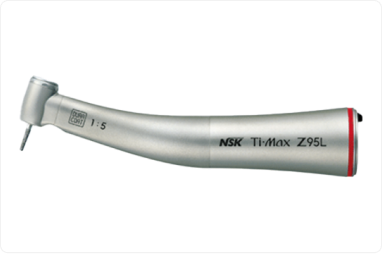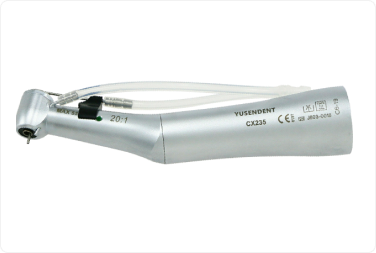Extend the Life of Your Vector R&D, Inc Dental Equipment with Quality Repair Services
Dental offices rely heavily on their equipment to provide exceptional care to their patients. Vector R&D, Inc. stands at the forefront of dental technology, offering state-of-the-art equipment designed for efficiency and durability. But, like all machinery, even the best equipment needs maintenance and occasional repairs to ensure it lasts as long as possible. This is where quality repair services become indispensable.
In this post, we’ll explore how you can extend the lifespan of your Vector R&D, Inc. dental equipment. We’ll discuss the importance of quality maintenance, introduce you to Summit Handpiece Express for reliable repair services, and provide actionable tips to keep your equipment in top shape.
Why Maintenance Matters in Dentistry
- Keeping Your Tools in Peak Condition: Every dental professional knows that clean and well-maintained tools lead to better patient outcomes. Regular maintenance not only ensures that equipment functions optimally but also minimizes the risk of unexpected breakdowns. Just as you wouldn’t skip your own health check-ups, your dental tools need regular attention too.
- Introducing Vector R&D, Inc.: Vector R&D, Inc. stands out as a leader in dental technology. Known for their innovative and reliable equipment, they offer tools designed to enhance precision and efficiency. Yet, even the best tools need maintenance. By pairing Vector R&D’s technology with top-quality repair services, you ensure equipment remains in prime condition.
- Repair Services as Lifespan Extenders: Every piece of equipment has a lifespan, but with proper care and timely repairs, that lifespan can be extended significantly. Instead of frequent replacements, which are costly and time-consuming, invest in quality repair services to keep your tools running smoothly for years.

Key Maintenance Practices for Dental Equipment
- Establishing a Routine Cleaning Schedule: Routine cleaning is vital for maintaining dental equipment. Implementing a structured cleaning schedule helps avert wear and tear, ensuring tools perform at their best. Incorporate daily tasks, such as disinfecting surfaces, alongside weekly deep cleans and monthly inspections to thoroughly maintain your equipment and guarantee the accuracy of treatments.
- Catching Issues Early: Regular inspections play a crucial role in maintaining the longevity of your dental equipment. By routinely checking for minor issues such as frayed cables, leaks, or worn-out components, you can address these problems early. This proactive approach not only helps avoid costly repairs but also ensures minimal disruption to your practice.
- Proper Storage is Essential: Proper storage is essential for prolonging the life of your dental equipment. Tools should be organized neatly and kept in a designated area that is both clean and dry. Additionally, avoiding exposure to extreme temperatures helps prevent damage, ensuring your instruments remain functional and reliable for patient care.
Summit Handpiece Express: Your Trusted Repair Partner
- An Overview of Their Expertise: Summit Handpiece Express has established itself as a trusted leader in dental equipment repair, specializing in handpieces. Their commitment to excellence guarantees that every repaired tool is restored to its optimal performance, allowing dental professionals to rely on their equipment for precise and efficient patient care.
- Why Choose Their Services?: Choosing Summit Handpiece Express means opting for reliability and efficiency in your dental equipment repair needs. Their commitment to quick turnaround times ensures minimal disruption to your practice, allowing you to focus on patient care. With a skilled team of technicians dedicated to excellence, you can trust that every repair will restore your tools to optimal performance, enhancing the longevity and functionality of your vital dental equipment.
- Hear it From Satisfied Customers: Customer satisfaction truly reflects the quality of service provided by Summit Handpiece Express. Dental professionals repeatedly express their confidence in the repair expertise and commend the quick, friendly service they receive. Testimonials reveal that trusting Summit Handpiece Express not only ensures high-quality repairs but also fosters a sense of security, allowing practitioners to focus entirely on delivering the best care for their patients without equipment worries.
Top Tips for Maintaining Dental Equipment
- Best Practices in Cleaning and Sterilization: When maintaining your dental equipment, it’s crucial to use cleaning agents that are specifically designed for dental tools. Opt for solutions that are safe, effective, and non-corrosive. Implementing proper techniques, such as avoiding abrasive materials and following manufacturer instructions, ensures that your instruments are thoroughly cleaned while preventing any potential damage, thus extending their longevity and maintaining optimal performance.
- The Importance of Lubrication: Lubrication plays a crucial role in maintaining the efficiency of handpieces. By regularly lubricating the moving parts, you can significantly reduce friction and wear, which ultimately prolongs the lifespan of your tools and ensures optimal performance during dental procedures.
- Handling and Storage Techniques: To prevent accidental damage to dental equipment, always handle tools with care. Use protective cases during transport to safeguard against impacts and adhere to the manufacturer’s storage guidelines to ensure equipment integrity, extending the lifespan and reliability of your vital tools.
Common Issues with Dental Equipment and Their Solutions
- Plugged Waterlines: One common issue faced in dental practices is plugged waterlines, which can lead to poor performance and compromised patient care. To resolve this, regularly flush the waterlines with an appropriate cleaning solution to dislodge any debris. Additionally, implementing a routine maintenance schedule for line cleaning can help prevent blockages from occurring in the first place.
- Fixing Air Leaks: Air leaks in dental handpieces can affect performance and lead to inefficient operation. To fix this issue, inspect all connections regularly and ensure that O-rings and seals are intact. If an air leak is detected, replace worn or damaged components immediately. Employing a qualified technician for maintenance can further ensure that the entire system remains leak-free and operates optimally.
- Addressing Low Power or Speed: Experiencing low power or slow handpiece speed can hinder your ability to perform procedures effectively. Begin by checking if the handpiece is properly connected to the air supply. If connections are secure, inspect the turbine and air filter for any blockages or defects. Cleaning or replacing these components may restore optimal speed. If problems persist, consult with a repair service to ensure your handpiece is serviced correctly for peak performance.
Repairing vs. Replacing Equipment
- Cost-Effective Solutions: When faced with malfunctioning dental equipment, many practices grapple with the decision to repair or replace. Generally, repairing dental equipment is often significantly more cost-effective than purchasing new tools outright. By opting for repairs, dental professionals can retain quality equipment while avoiding the hefty price tag associated with new purchases. Additionally, regular maintenance and timely repairs can further mitigate unexpected costs, thus aiding in budgeting and financial planning for the practice.
- Environmental Considerations: Choosing to repair dental equipment rather than replace it can have a positive effect on the environment. Every piece of equipment, when discarded, contributes to waste, adding to landfills and ecological distress. By extending the life of existing tools, practices can reduce their carbon footprint and contribute to a more sustainable approach within the dental industry. Embracing repair options supports a culture of reuse and resource conservation, which is increasingly vital in today’s environmentally-conscious society.
- Consistency in Operations: Another significant advantage of repairing dental equipment is the maintenance of consistency within the practice. Familiarity with specific tools allows dental professionals to deliver a higher quality of care, as they have developed techniques that cater to the nuances of particular instruments. Replacing tools can lead to variations in performance and may require staff retraining. By opting for repairs instead, dental practices can ensure a uniformity of equipment that supports efficient workflows and consistent patient outcomes.

The Significance of Quality Parts in Repairs
- Risks of Inferior Parts: Using inferior or generic parts in dental equipment repairs can lead to a myriad of issues, compromising both performance and patient safety. Low-quality components often lack durability, resulting in frequent breakdowns and increased maintenance costs. Moreover, these subpar parts may not meet the necessary specifications, which can affect the precision and effectiveness of dental procedures, potentially leading to suboptimal patient outcomes.
- Benefits of OEM Parts: Opting for Original Equipment Manufacturer (OEM) parts when repairing dental tools guarantees reliability and compatibility with existing instruments. OEM parts are designed specifically for the equipment, ensuring a perfect fit and optimal functionality. These components often come with warranties, providing additional peace of mind. Furthermore, investing in high-quality OEM parts can prolong the lifespan of your dental equipment, reducing long-term costs associated with repairs and replacements.
- Recommended Parts for Vector R&D Equipment: For Vector R&D equipment, it is crucial to source parts that are specifically engineered to enhance performance. Recommended components include high-quality handpiece turbines, precision O-rings, and durable tubing systems. By choosing reputable suppliers for these parts, you can ensure that your dental equipment operates at peak efficiency, thereby maintaining the highest standards of patient care.
Conclusion
Maintaining and repairing dental equipment is essential for ensuring optimal performance and patient care. By addressing common issues promptly, choosing cost-effective solutions, and selecting quality parts for repairs, dental practices can enhance efficiency, reduce costs, and promote sustainability. Additionally, adhering to manufacturer guidelines for handling and storage of equipment can further extend the lifespan of vital tools. Ultimately, by investing in proper maintenance and repairs, dental professionals can ensure consistency in operations and provide the highest level of care to their patients. So remember, handle your tools with care!
https://www.google.com/maps?cid=5687140069355702096


